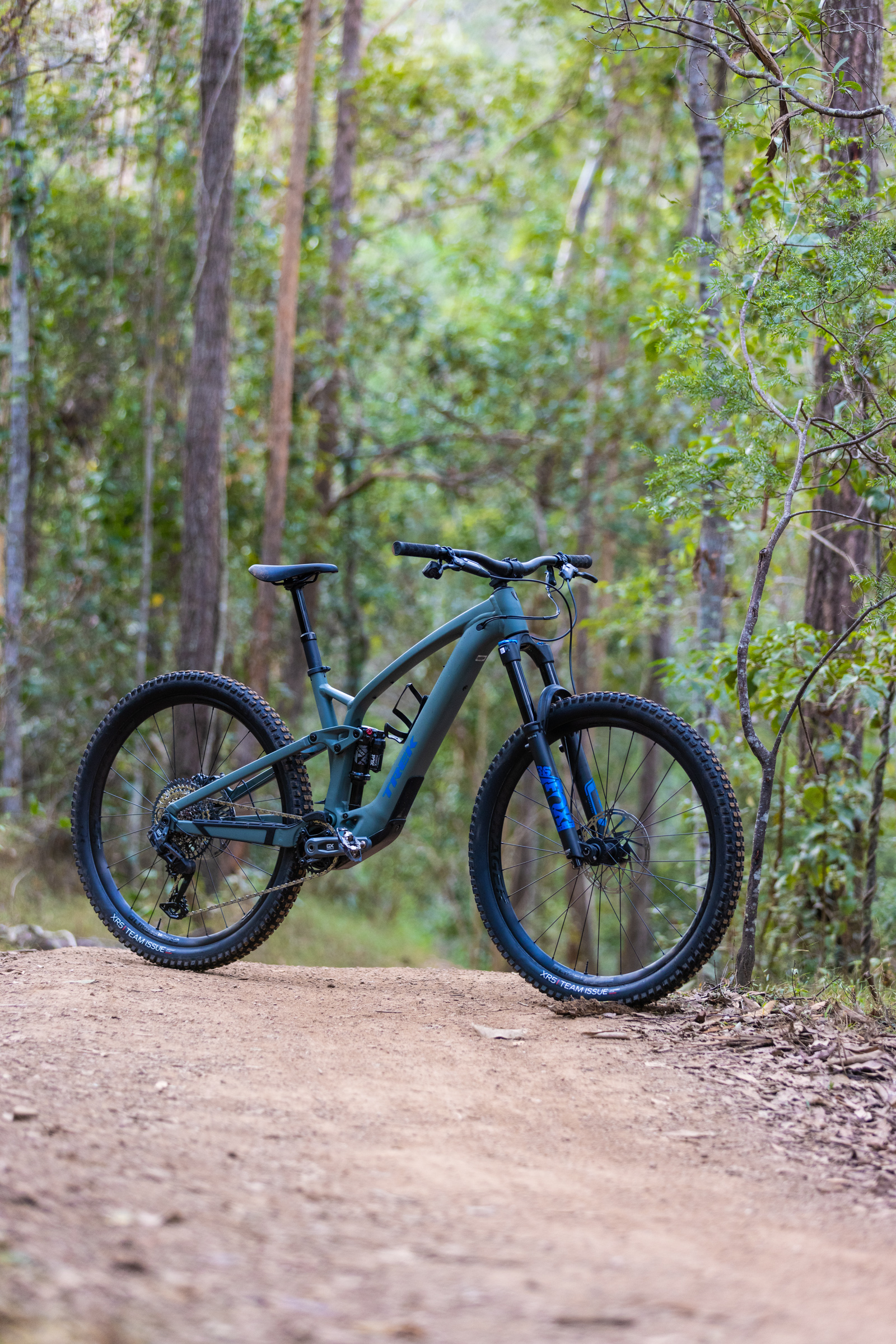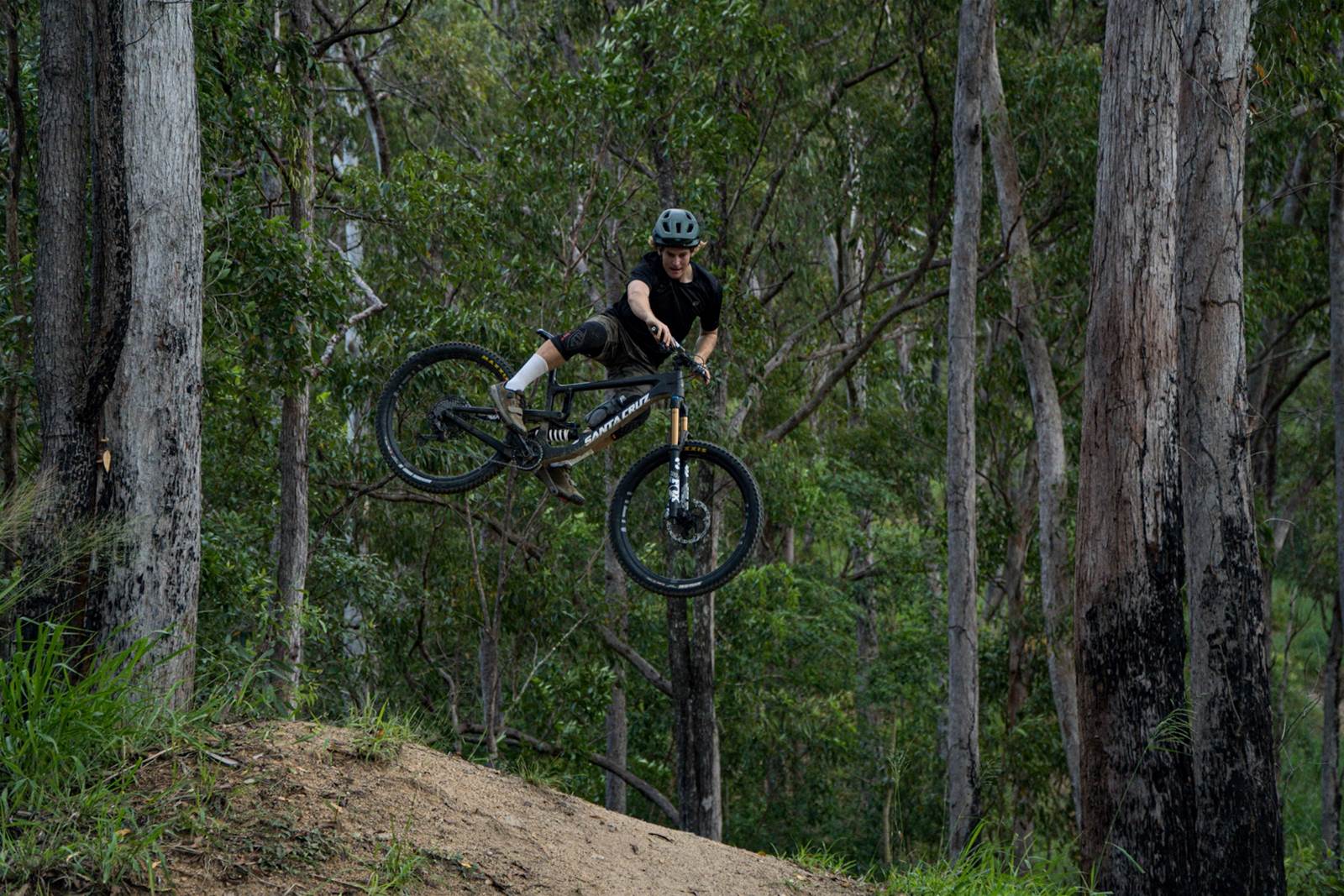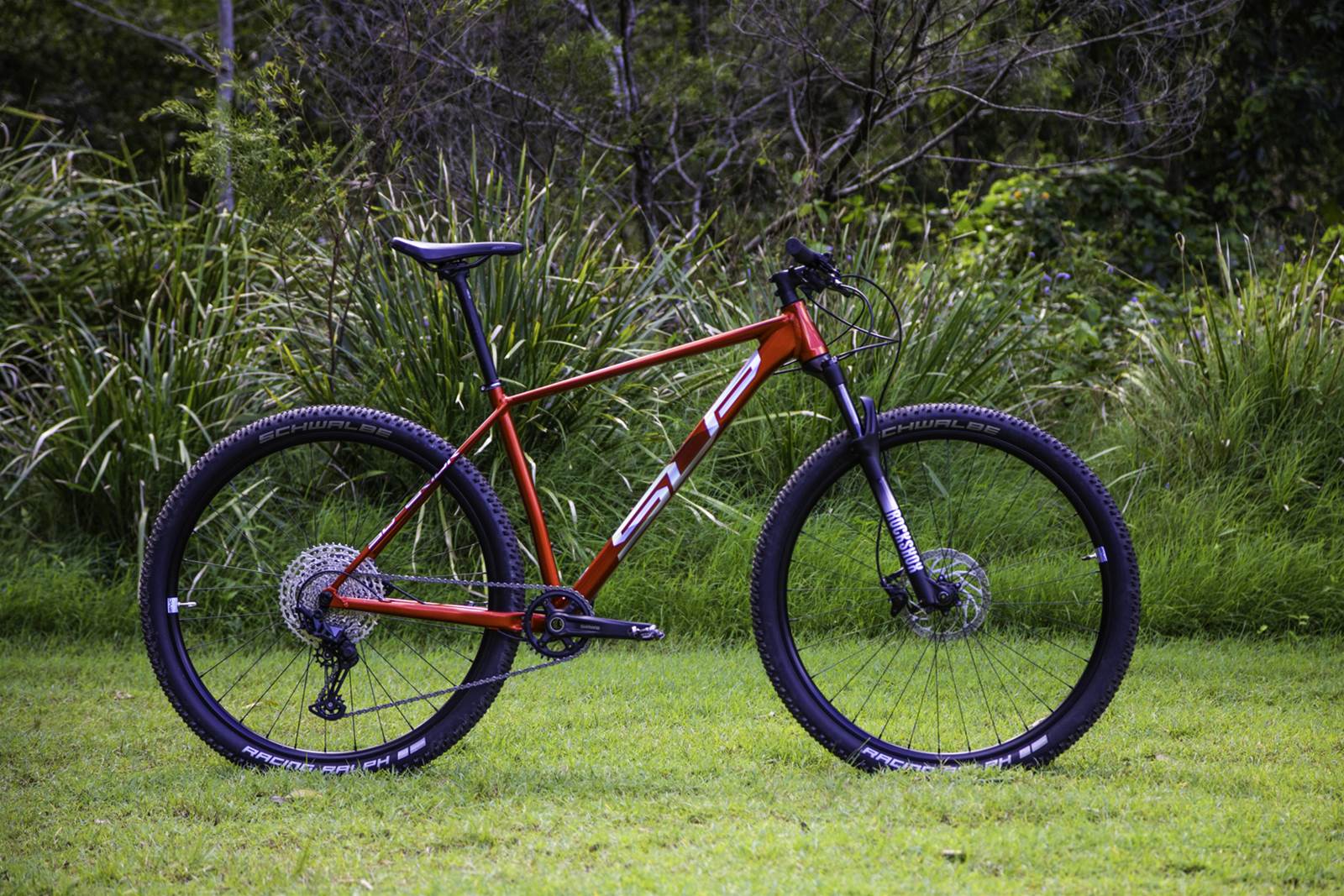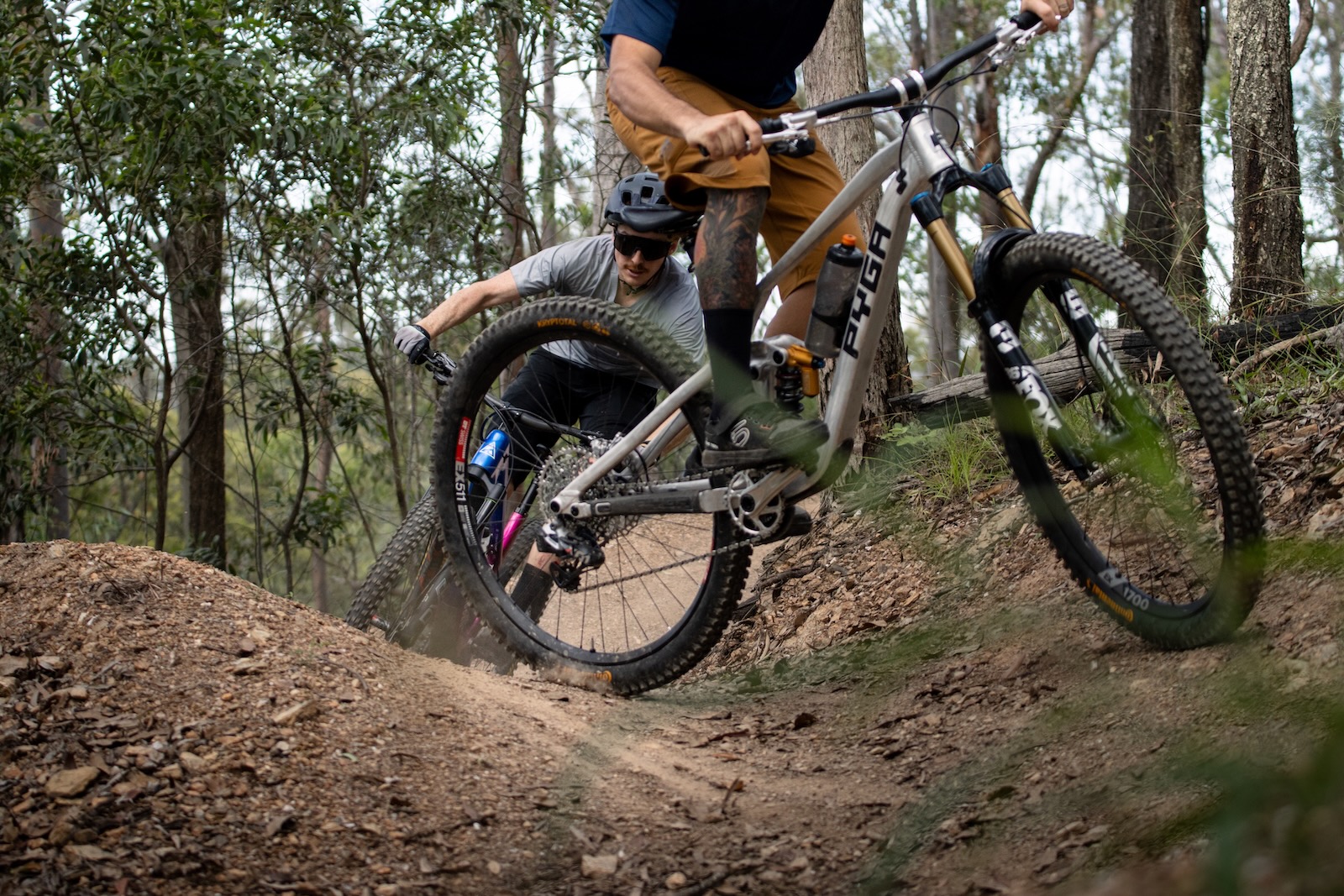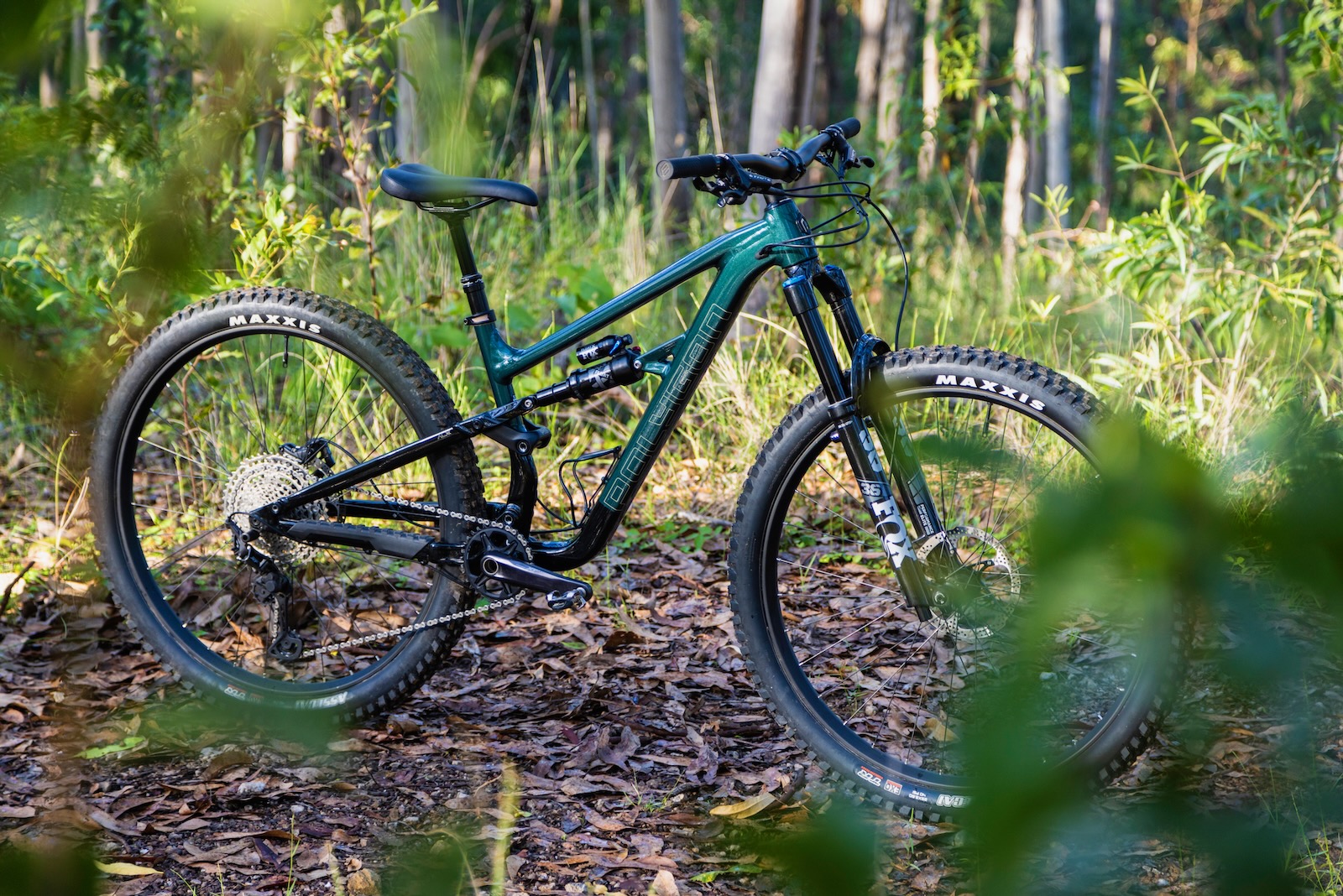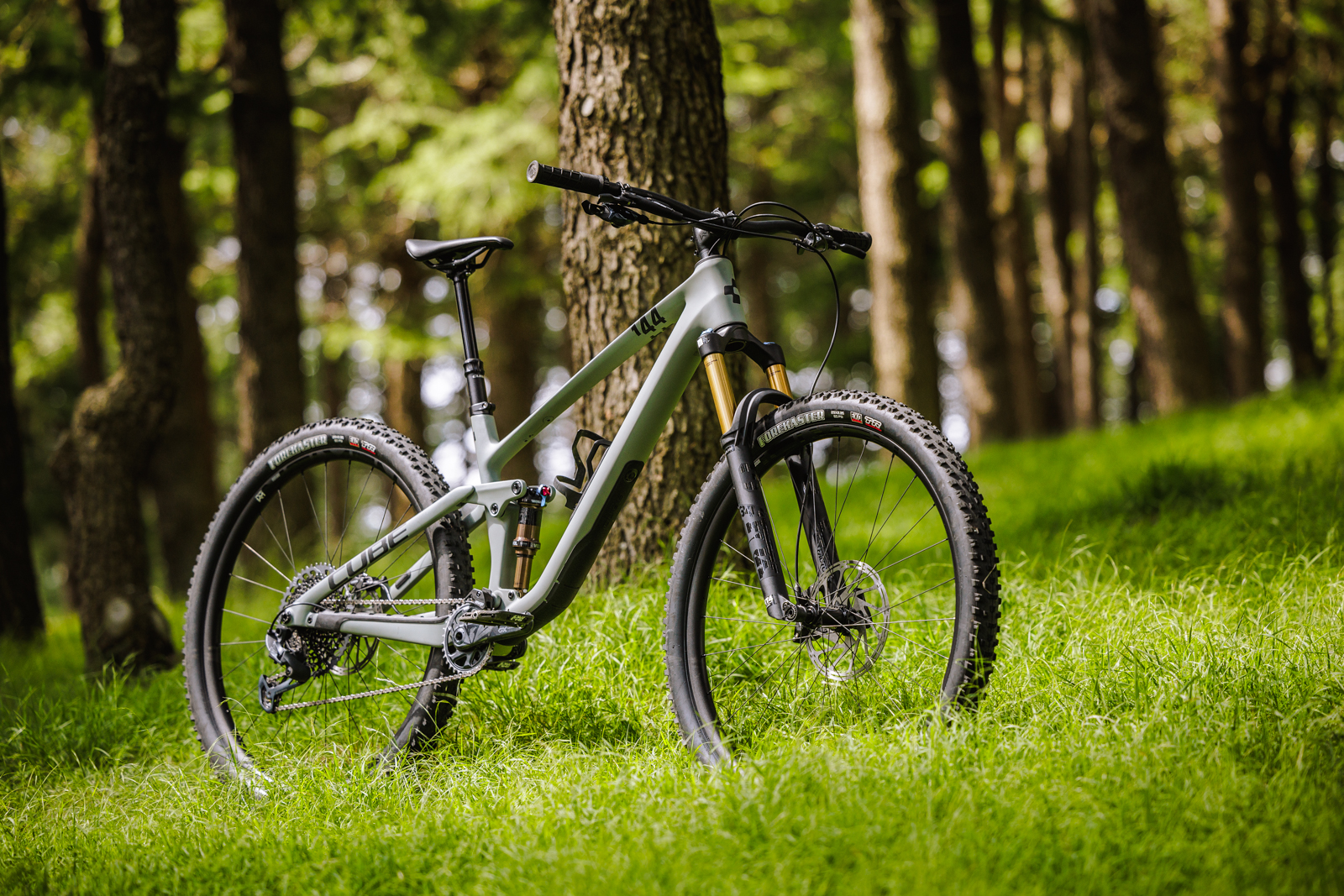TESTED: Trek Fuel EXe 8 Alloy e-bike
Trek's Fuel EXe range has expanded, with two alloy framed models added to the line-up with some nifty new features.
Last year Trek released the new Fuel EXe to global acclaim. The 29er trail e-bike combined a highly capable trail bike platform with one of the sleekest eMTB systems on the market with the co-release of the TQ HPR-50 motor, battery and head unit. While this model was only available in carbon frames in 2022, Trek have just released two alloy framed models. In Australia these will starts at $8499.99 for the EXe 5 and run to the Fuel EXe 8 for $11499.99 that we have had on test. When the carbon bikes were introduced in 2022, the pricing was very good for the ride and build quality that is on offer. But with the alloy frame, Trek can bring the price point down a little lower. I thoroughly enjoyed riding the Fuel EXe, and when I heard an alloy range was coming, I was keen to test one to see if the same ride dynamic would be delivered.
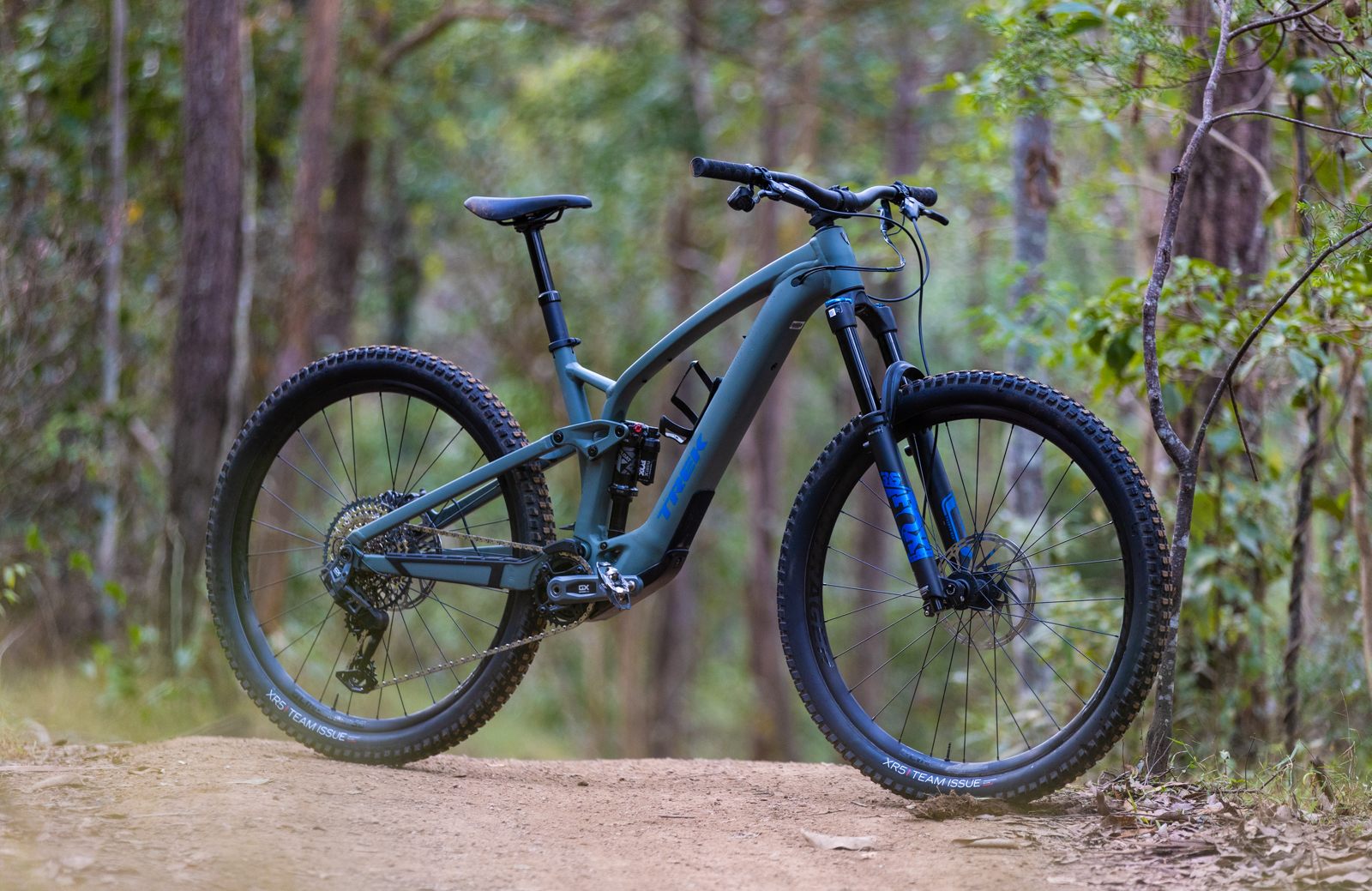
First impressions
As with the carbon models, the alloy Fuel EXe comes with 150mm travel forks and 140mm travel in the back end. Trek state that the bike is mullet approved, and you can pop a 160mm travel fork in there as well. While Trek have their MinoLink for adjustments to the seat angle, head angle, reach and bottom bracket height, the alloy EXe has adjustable head set cups to allow 1 degree more or less head angle – something not found on the carbon EXe.
The SRAM GX Transmission drivetrain is all-new, and brings the advantages of the T-type group set to a lower price point. What's cool is that the rear derailleur is powered by the bike battery – that's one less thing to worry about charging.
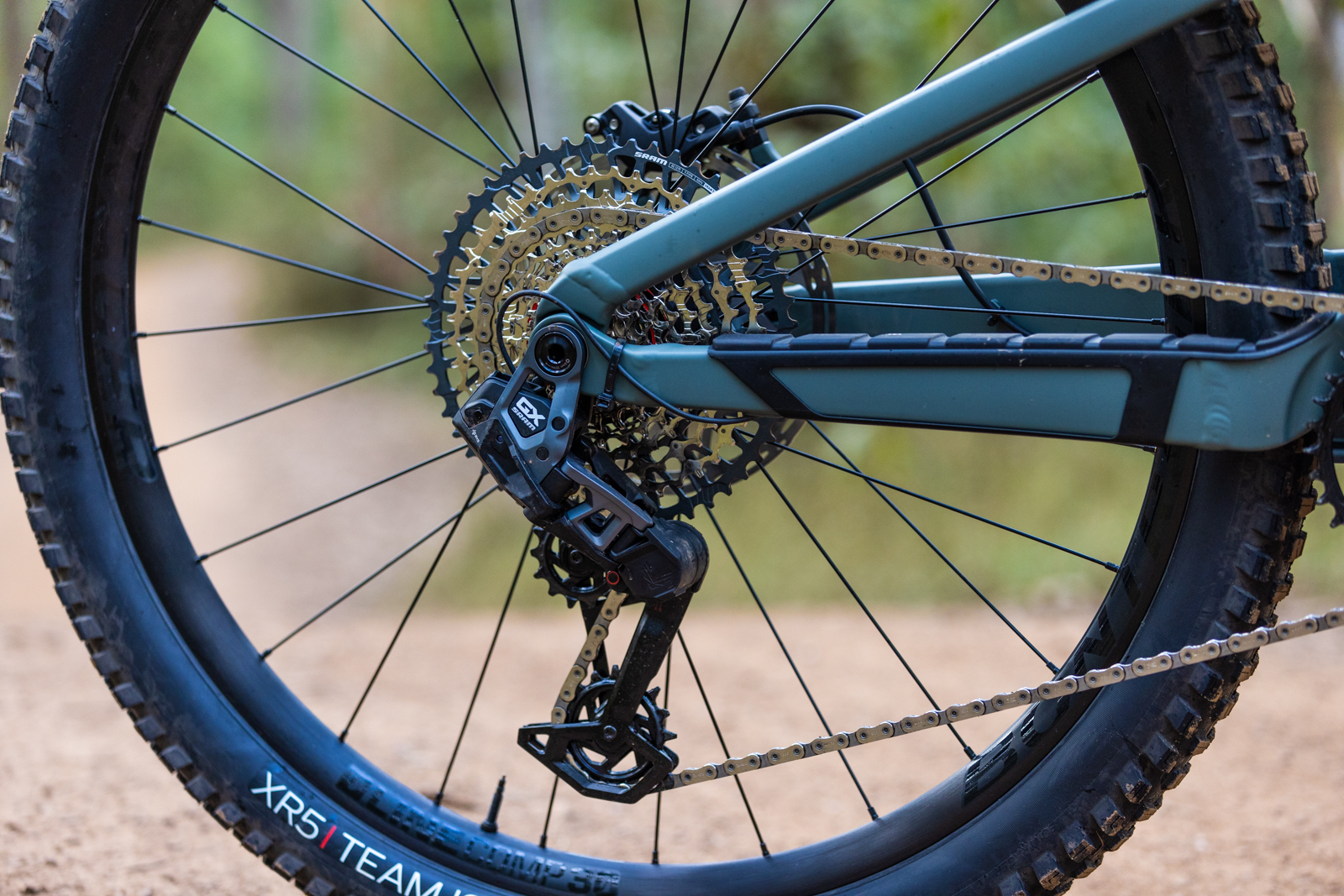
You can disconnect the cord and fit an AXS battery if you prefer. SRAM have specific crank sets for different eMTB systems, including the 165mm GX eMTB cranks here with a 32t 104BCD chain ring. SRAM DB8 brakes and bike 203mm rotors take care of the stopping, and Bontrager look after the rest of the build kit, from Line Comp wheels, to tyres, cockpit and 170mm dropper post. Fox provide a Rhythm 36 fork and Float X Performance rear shock for reliability and adjustability.
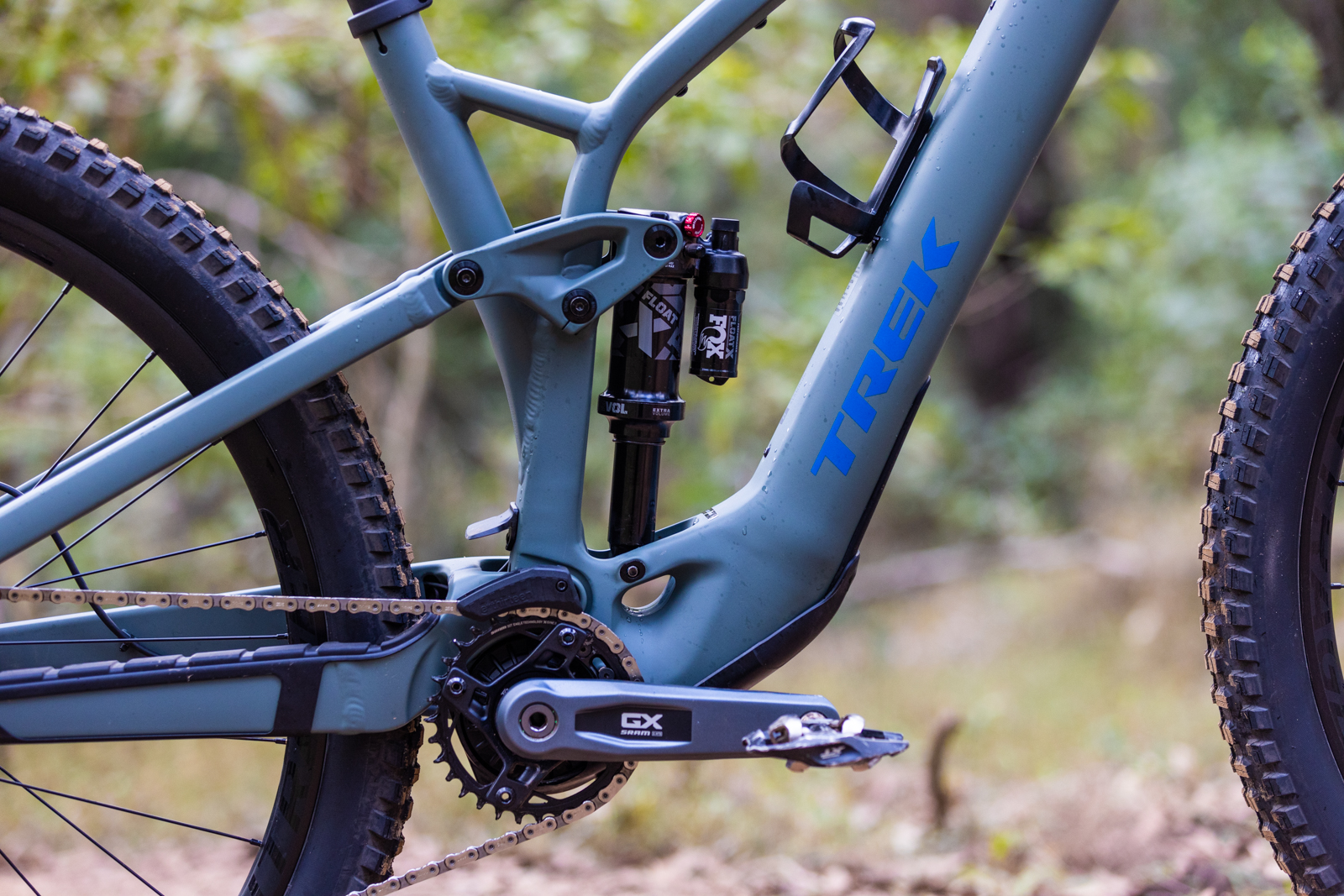
Our large test frame has a 65 degree head angle with 44mm fork offset, 77 degree seat angle, 485mm reach and 440mm chain stays. There are four frame sizes, you can find the exact specs on the Trek website. As on the carbon model, Knock Block is gone to make way for the head unit, which sits neatly into the top tube and shows you what mode you're in, what your likely range is in that mode, plus speed, your power, the bike's power, and battery charge left as a percentage. Our EXe 8 GX Transmission model weighs just 20.41kg in large, setup tubeless and waiting for pedals to be fitted. I used the Trek Central app to get baseline settings for suspension and tyres, and then got ready to hit the trails.
All about the TQ HPR-50 drive system
The TQ motor weighs 1.85kg and the 360Wh battery is 1.83kg, which makes for a light overall system. With 50Nm of torque and 300W of peak power, it's a very intuitive ride feel, accessed by 3 dynamic assistance modes. Since the release of the motor, the mid-power segment has really heated up (if you can excuse the pun). Specialized's new 1.2 motor on their Levo SL has 50Nm of torque and 320W of peak power. The Fazua Ride 60 like on the Pivot Shuttle SL packs 60Nm of torque with 450W peak power, and the new Bosch SX has 55Nm of torque with a whopping 600W of peak power (at a very high cadence).
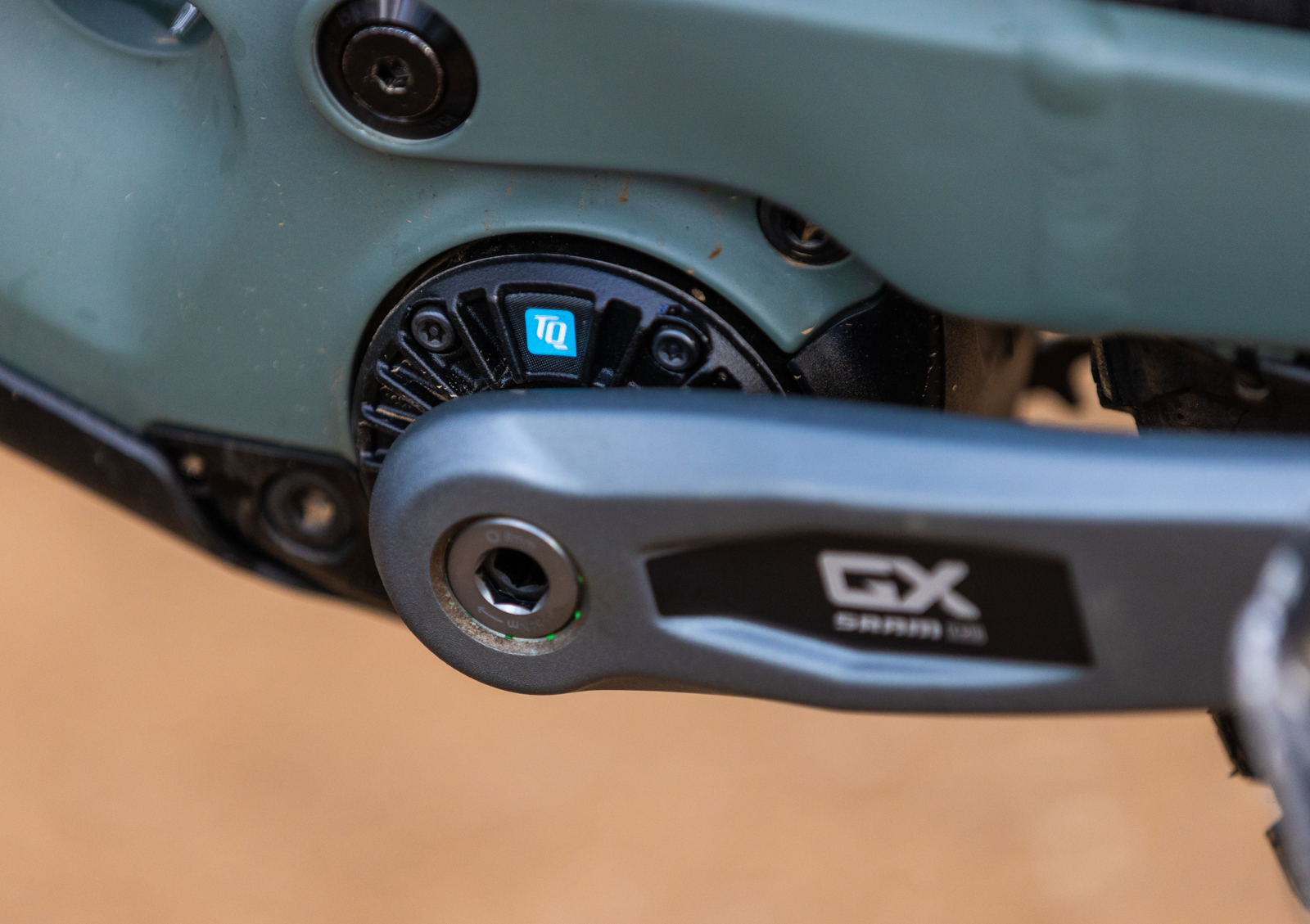
There is a 900g 160Wh Range extender available, which goes in a bottle holder. You can expect about a 40% increase in range with the range extender. Charge times are about 2hrs for the main battery, and one hour for the range extender. There's a charge port on the range extender, which means you can charge both batteries at once, although the system prioritises the main battery. You can ride the bike without the battery, or just the range extender – but you'll need to add an AXS battery for the rear derailleur.
The head unit has a 50mm screen sits into the top tube. Each screen shows the battery with a visual indicator for charge left, and a bar along the base with 1, 2 or 3 bars illuminated to show the support mode you're in. If no bars are there, you need to fire it up. The unit connects to your phone or ANT+ bike computer as well. You can use the Trek Central app to customise the modes, and for ride tracking – including a visual representation of where you can ride in the mod you're in, with the charge on your bike. You can even pair it with things like a heart rate monitor for fitness tracking. It's a very thorough system and well-integrated into the bike, and the additional support via the app.
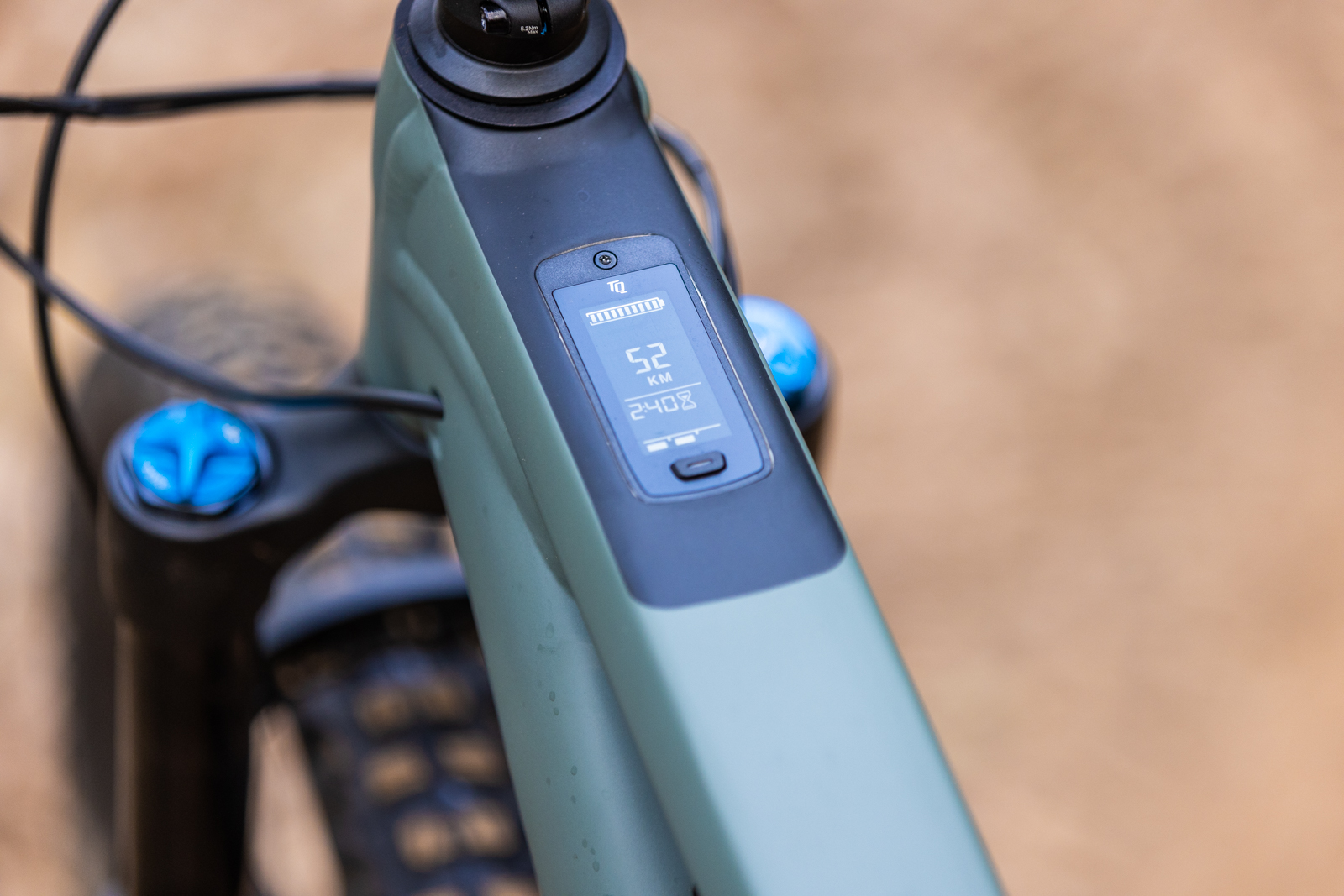
On the trail
I really loved how the Fuel Exe I tested last year rode, especially with such a seamless engagement with the drive system. That all remains on the EXe 8 – but the shifting the SRAM's new GX Transmission group set is incredible for an eMTB and improves the overall ride of the bike. You can read my GX Transmissions group set review right here. Any eMTB system adds a lot more load to a drivetrain, and the chain and shift security afforded by the T-type system and the shift ramps and shift mapping means in the entire test period I had no missed shift, no crunch gears, no slipping chains. Every single shift was perfect. While some may be surprised to see the cable connecting the rear mech to the bike's battery, it makes perfect sense to me, creating one unit to charge, not two.
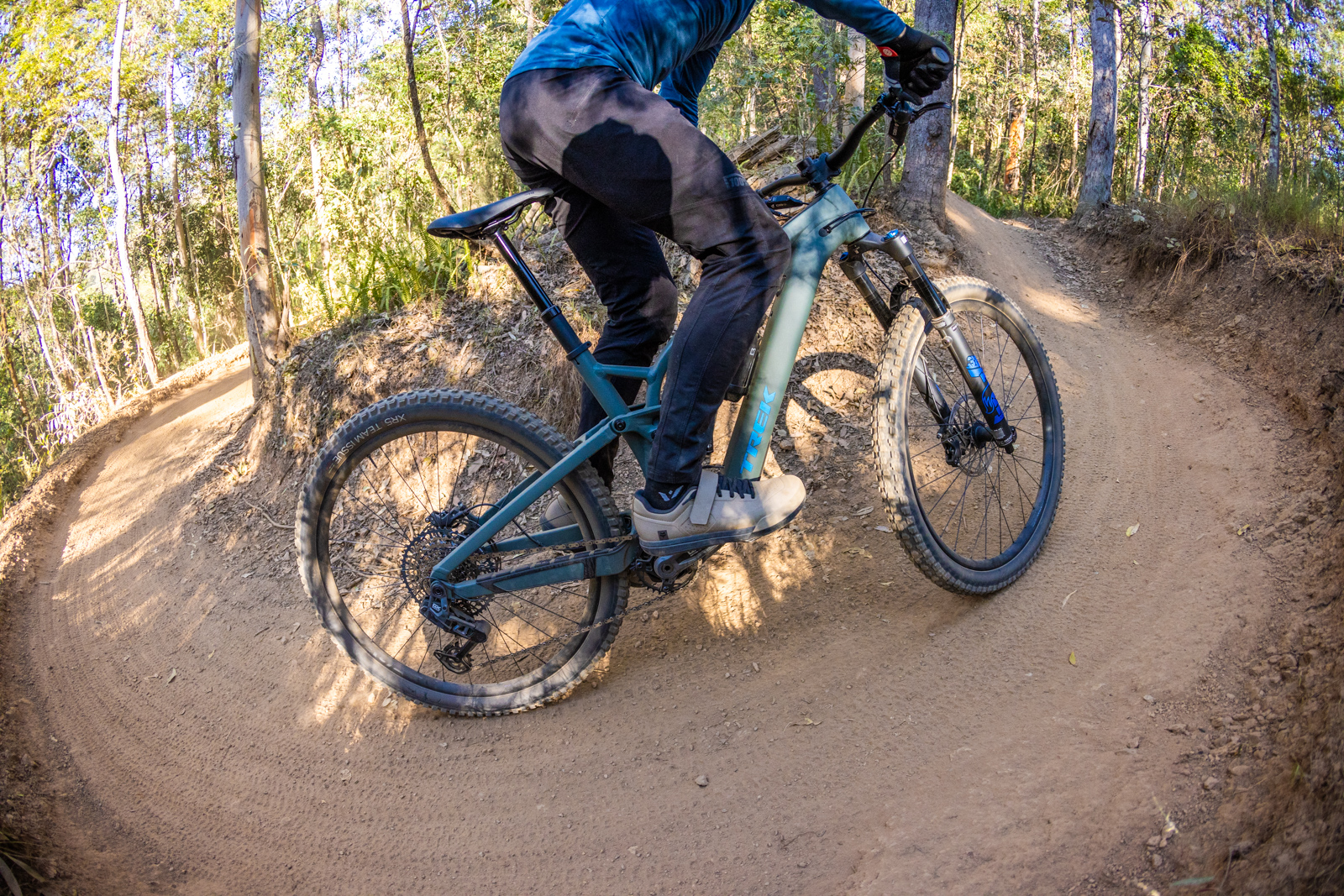
In an alloy variant, the weight advantage of a mid-power eMTB is reduced a little, but I think the overall ride feel remains. While some riders love the surging power of a high torque e-bike, it can require a totally different riding style. That's not the case with the Exe. I really enjoy how the TQ motor blends into the background of riding the Fuel EXe. In part, this is due to how quiet it is, and also the programmed settings, making sure it doesn't surge too much. In the highest setting at higher cadences, you will get a continual 300W of support, which may be doubling your output, so the assistance really is there. That said, it's not the big boost of acceleration you would get with a higher torque system with a higher level of peak power.
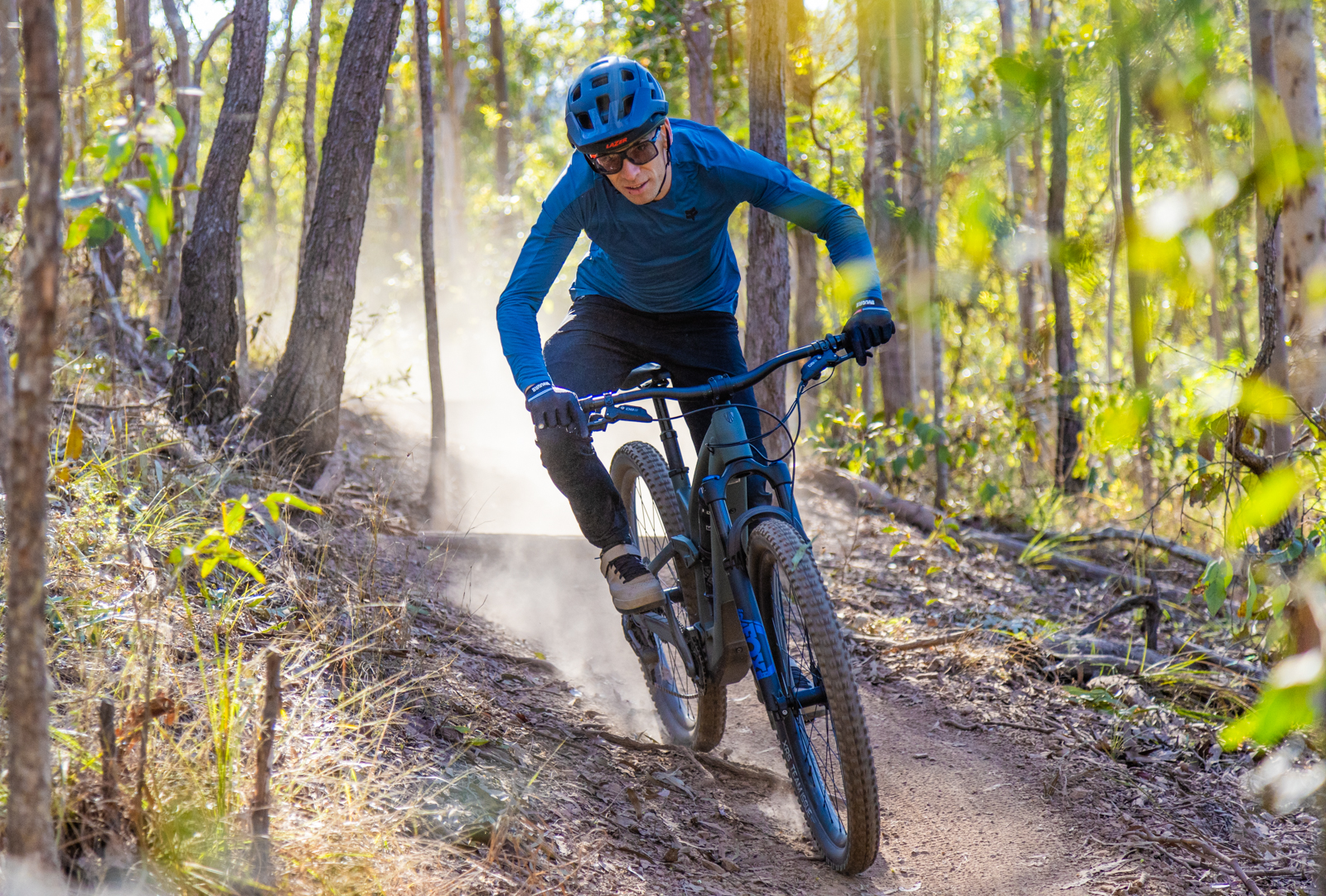
Compared to something like the Cube Stereo Hybrid 140 HPC SLX 750 I was testing at the same time, the bikes did ride differently despite both being 150/140mm trail 29ers. The Cube was a little shorter and more upright, but primarily it was heavier thanks to the Bosch Smart System and 750Wh battery. On tighter trails this did mean I was using the assistance differently, and on faster trails I sometimes just head to let the bike run. On the flip side, the EXe was more responsive with a shorter back end, and even more stable on steeper runs thanks to the longer reach and slacker head angle. It let me muscle up climbs with assistance, as opposed to the feeling of self-shuttling with the Cube.
In terms of handling, I kept the Fuel EXe in the low setting with the MinoLink. But if I rode in an area with more rock and more singletrack climbs I would certainly use the high setting. Even though the EXe models come with 165mm cranks, a little more clearance is always good, to keep the cranks spinning and the motor on the boil for the assistance on technical features.
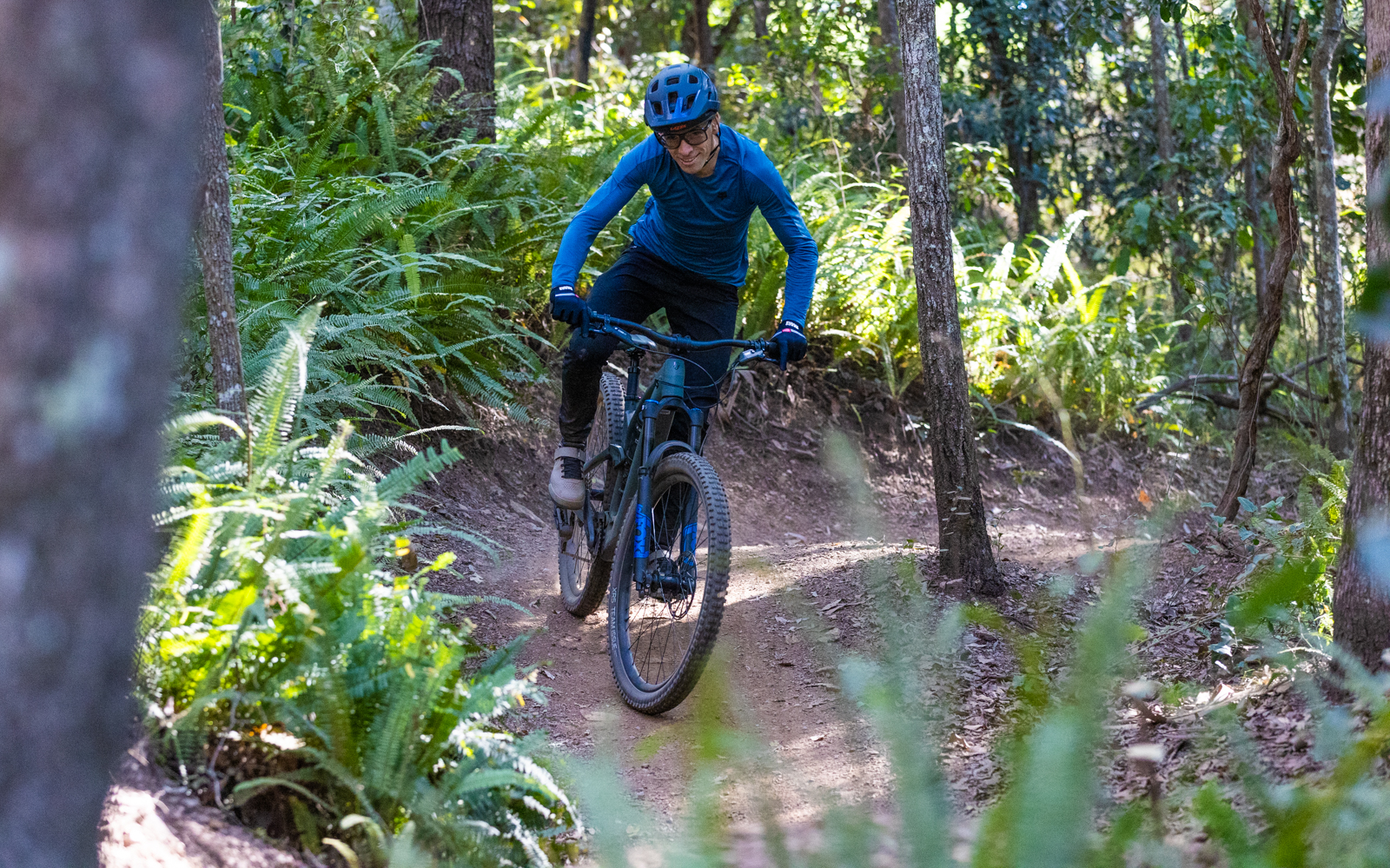
For the majority of my riding, I liked the middle assistance setting, rarely dropping back to low and lifting to high on steeper and more technical trails, or on descents that had tight corners where I wanted all the help I could get to get back up to speed after corners. I did err towards higher settings on this model compared to the top shelf carbon model I rode last year, however I think that is more to do with jumping between the full-power Cube and this system, than the result of a bike being 2kg heavier.
I'm not sure I ever found the limits with the suspension on the Trek. There's a climb switch on the shock, but I found it pedalled really well. Most eMTBs work off a cadence sensor for support, so getting out of the saddle and pedalling under higher load rarely has the result you're after. Sitting and spinning keeps the support high, and the suspension is very balanced in that regard. I had no harsh bottoms out, despite a couple of cases on some doubles. The Rhythm fork doesn't leave you many options for upgrades, but given you have air pressure, rebound and volume control, there's a lot you can do before looking to change.
Our take
Trek's Fuel Exe eMTB was a popular addition to the mid-power eMTB market, and the alloy variant now suits riders who prefer an alloy frame, or want to access the same support and suspension package at a slightly lower price point. With an alloy Shimano Deore 12-speed Fuel Exe selling for $8499.99, these still aren't cheap bikes – but they are high on value. With the Fuel Exe 8, Trek have delivered all the benefits of their mid-power trail eMTB with the best shifting system on the market. It cannot be overstated how secure the shifting is with a T-type group set. The chain security across the sprockets is second to none, and this makes for a better riding experience and likely a longer lasting drivetrain too. Along with the seamless support of the TQ system on the Trek Fuel Exe, it really makes for a very refined ride. Thanks to the options on setup and geometry that are available, you really can make the Fuel Exe alloy just about whatever trail eMTB you want it to be.

Trek Fuel Exe 8
RRP $11499.99
Weight 20.41kg (as tested)
From trekbikes.com/au/EN_au/
Available Sizes S, M, L (tested), XL”
Frame Material Alpha Platinum Aluminium
Fork Fox Float Rhythm 36 29”, 150mm, 44mm offset
Shock Fox Float X Performance, 2-position, 140mm
Motor TQ-HPR50, 50Nm, 300W peak
Battery TQ 360Wh
Head unit TQ integrated
Shifter SRAM GX AXS T-type pod
Derailleur SRAM GX AXS T-type
Crank SRAM GX eMTB, 34t, 165mm
Chain SRAM GX AXS T-type
Cassette SRAM XS-1275 T-type 10-52
Wheel set Bontrager Line Comp 30, RapidDrive 108
Tyres Bontrager XR5 Team Issue, 29×2.5”
Brakes SRAM DB8, 203/203mm
Stem Bontrager Elite 45mm
Handlebars Bontrager Line, 780mm
Seatpost Bontrager Line Dropper, 34.9mm, 170mm
Saddle Bontrager Verse P3
